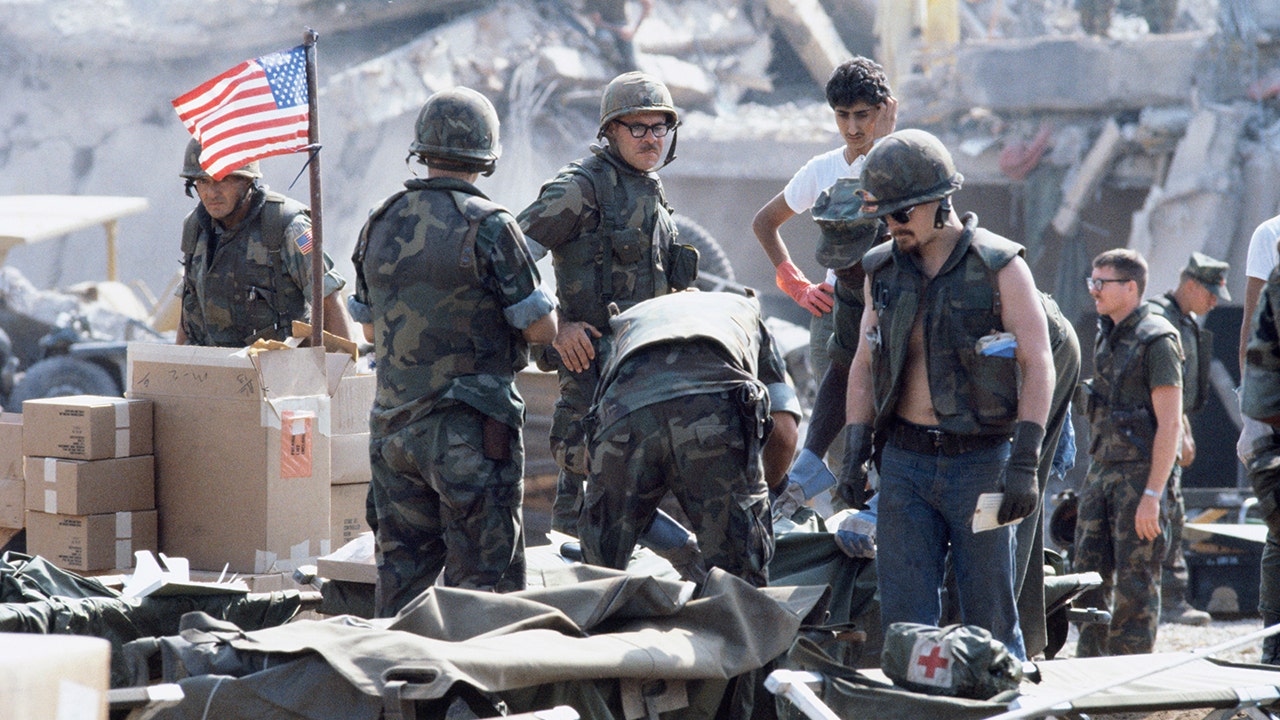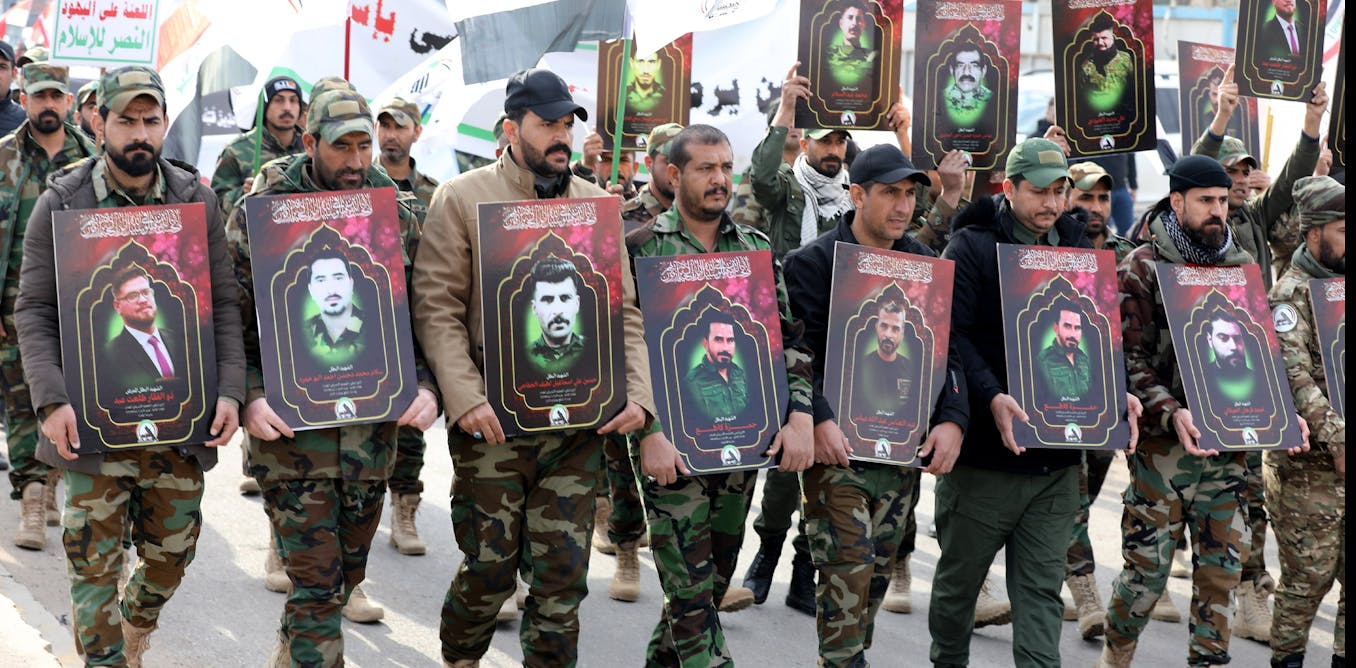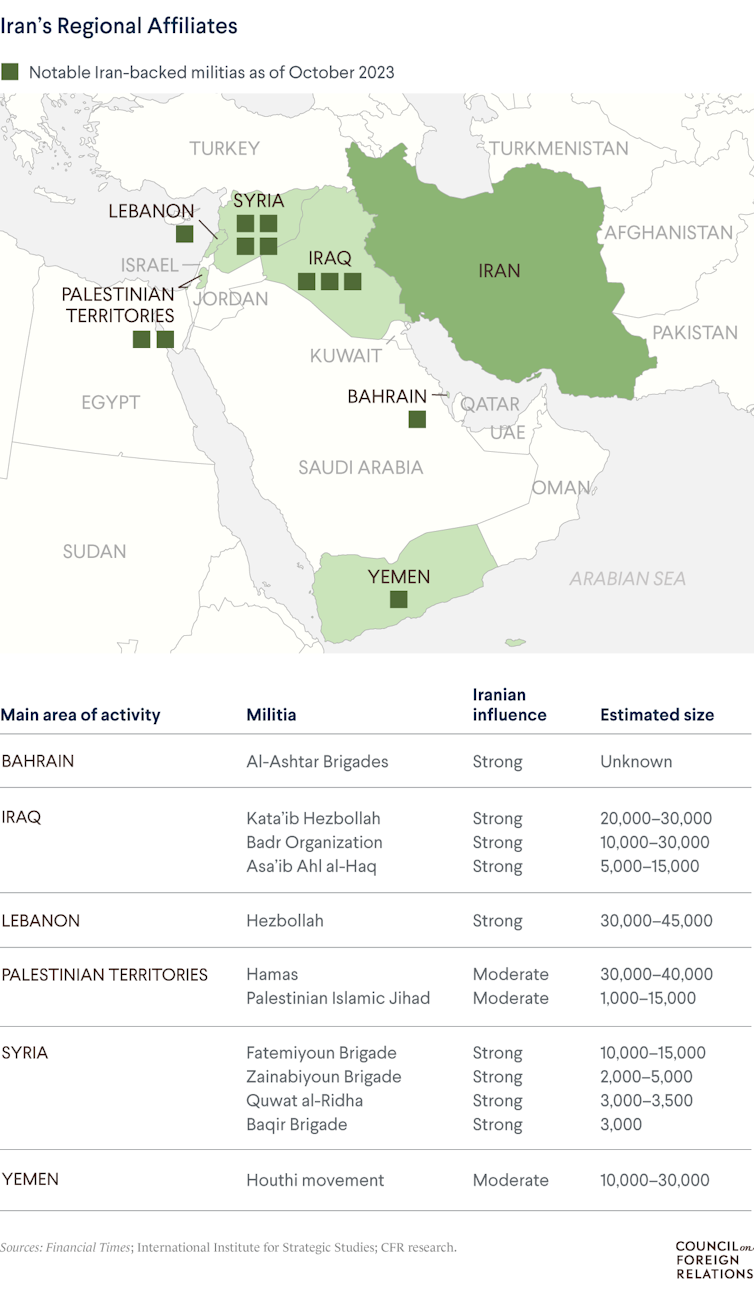Do we really know what killed 248 American soldiers in a largely forgotten disaster nearly four decades ago?

topsecretumbra.substack.com
Rethinking the Screaming Eagles’ Deadliest Day
Do we really know what killed 248 American soldiers in a largely forgotten disaster nearly four decades ago?
John Schindler
There’s no better-known division in the U.S. Army than the 101st Airborne, the famed Screaming Eagles. That outfit has been legendary since its exploits in the Second World War: the Normandy jump on D-Day, the jump north of Eindhoven two months later, then its heroic stand at Bastogne in the Battle of the Bulge. The 101st fought in Vietnam, then converted to an air assault division (i.e. it goes into battle with helicopters, not parachutes), and as such participated in the 1991 Gulf War plus our post-9/11 campaigns against terrorism.
It became famous to a new generation thanks to a 1992 book about one of its rifle companies in WW2, authored by Stephen Ambrose (or
somebody), which was turned into a superlative TV miniseries by HBO in 2001. This was perfectly timed with the Greatest Generation craze of the era. Thanks to that
Band of Brothers, more Americans have heard of the 101st than any other division in the U.S. military.
It's therefore sadly ironic that the 101st Airborne Division’s deadliest day is scarcely remembered outside Fort Campbell in Kentucky, its home base, and a small town in Newfoundland. That town is Gander, where on December 12, 1985, a heavily laden DC-8 four-engine jetliner crashed just after takeoff, killing all 256 aboard: eight crew and 248 U.S. Army soldiers, of which 236 belonged to the 101st, nearly all of them from its 3d Battalion, 502d Infantry Regiment. More Screaming Eagles died that day in Newfoundland than were killed in action on D-Day.*
While the disaster got a lot of press coverage at the time, including an
emotional speech by President Ronald Reagan to the families of the fallen at Ft. Campbell, the story faded from the headlines, in part because it happened in a remote region of Canada. There are memorials to the crash at Ft. Campbell and Gander, major anniversaries are commemorated by the U.S. Army, it remains the deadliest plane crash ever in Canada, as well as the U.S. Army’s worst peacetime disaster, but the Gander tragedy has faded from broader public consciousness.
Which is regrettable, not just for all the young lives lost, but because serious questions linger about what killed 248 American soldiers. They were headed home for Christmas after a tour with the United Nations peacekeeping force in the Sinai, founded in 1981 and still active today (there remains a U.S. battalion serving on rotation with that force). They were flying home from Cairo to Ft. Campbell with fueling stops in Cologne and Gander. Their ride home was with Arrow Air, a contract carrier for the Pentagon, and Flight 1285 carried the first contingent of Screaming Eagles home for Christmas. Tragically, soldiers with families were given priority for the first flight home, so many children lost their father at Gander.
The doomed DC-8 was built in 1969 and was showing its age, plus Arrow Air’s inattention to maintenance. Several gauges were prone to malfunction and one of its four engines was temperamental. What is not in dispute is that Flight 1285 landed at Gander at 0534L, having crossed the Atlantic in the night. Conditions at Gander were chilly with some light icy drizzle. There was just enough time for some soldiers to phone their families at Ft. Campbell, telling them they would be home in just a few hours. The DC-8’s crew didn’t opt for de-icing, visual inspection having detected no significant ice buildup on the airplane, and therefore taxied to the runway, its fuel tanks full, headed for Kentucky, at 0645L.
It didn’t get far. Horrified onlookers observed the DC-8 lift off, barely, then fail to attain altitude. It limped over the Trans-Canada Highway and impacted the earth on a forested downward slope facing Gander Lake. Flight 1285 hit trees and broke apart upon collision with the rocky earth. An enormous fireball erupted, visible for miles around. There were no survivors.
Thanks to the vicissitudes of timing and bureaucracy, the investigation into the crash of Flight 1285 became notorious as one of the most chaotic and controversial in aviation history. Several agencies were involved – the U.S. National Transportation Safety Board because it was a U.S. airplane and carrier, while the Royal Canadian Mounted Police, with help from U.S. Army investigators and the FBI, assisted the inquiry – but the lead was taken by the recently established Canadian Aviation Safety Board. This was an unfortunate, if inevitable, choice since the newborn CASB was short on experience while being plagued by politics and bureaucratic infighting. The agency’s first big investigation was the deadliest plane crash in Canadian history, a massive case which taxed the CASB beyond its abilities.
Simply put, the CASB, still finding its feet as an organization, made an embarrassing hash of the Flight 1285 inquiry. Before long, its nine (later ten) investigators split into two factions which despised and mistrusted each other. This resulted in the strange outcome of two separate reports on the cause of the disaster. The
majority report was released in late 1988 and concluded that the crash was triggered by an unfortunate confluence of events. Although that report did not take a firm position as to exactly what brought down Flight 1285 and how, it posited with impressive detail a plausible scenario in which a combination of excessive weight (soldiers carry more luggage and gear than civilians do) and unnoticed icing on the wings, with possible loss of thrust from the troubled number four engine, brought down the jetliner, which was unable to generate sufficient lift to avoid crashing.
A few weeks later, four dissenting investigators released their
minority report, which scathingly rejected the majority’s take. Instead, the much shorter and less detailed minority assessment asserted that icing was not the cause of the crash, while claiming that Flight 1285 was on fire before it hit the earth, therefore some sort of explosion caused the disaster. The minority did not determine whether this alleged explosion was caused by unlisted military ordnance carried on the airplane or some sort of terrorism.
This ignited a political firestorm in Ottawa and beyond. In fairness to the minority take, soldiers sometimes do take unauthorized ordnance with them, several eyewitnesses claimed to see flames on the underside of Flight 1285 before it crashed, and terrorism, often of Middle Eastern origin, was alarmingly common in the mid-1980s, including against Western airliners. Indeed, there was even a claim of responsibility made by a known jihadist group (more on that shortly). In other words, it was hardly outlandish to suggest that something unnatural brought down Flight 1285.
That said, the minority report offered nothing amounting to hard evidence for its claims, which read more like a litany of possibilities, some of which contradict each other. Analytically, their case was much weaker than the majority’s assessment. Nevertheless, the surrounding controversy grew so serious that Ottawa disbanded the ill-starred CASB, replacing it in 1990 with the Transportation Safety Board of Canada, which became a more professional and less politicized agency than its predecessor. The Arrow Air debacle has not been repeated, and the TSB has investigated several major disasters successfully, meeting international standards.
That didn’t stop the minority investigators, led by the self-promoting member Les Filotas, from taking their case to the public. Flight 1285 blew up, they insisted, with Filotas giving interviews all over the place advocating his views. He published
a book in 1991 which asserted that the majority report was a sham and powerful forces in Ottawa and Washington wanted the investigation shut down. Filotas got the attention of Congress, where he shared his theories surrounding the explosion which he believed killed 248 American soldiers. Some Congressmembers found the apparent lack of interest in the crash by American investigators from the FBI, the NTSB, and even the U.S. Army to be suspect.
That doesn’t prove anything, of course. Les Filotas is the last minority member of the board still living, and he’s never abandoned his crusade for the bomb hypothesis. As recently as 2015 he appeared in a
major CBC News investigationlooking into the Gander crash, employing his customary talking points. Online you can find postings proffering various theories about what “really” happened to Flight 1285, of varying degrees of imagination.
Over time, however, the majority’s case has gotten stronger, particularly as our understanding has grown regarding just how little ice is needed to compromise the lift of an aircraft’s wing, especially if other factors are at play. Along comes an aviation blogger who goes by the handle Admiral Cloudberg with a
fresh look at Flight 1285. I’m a fan of
the Medium blog, which offers detailed examinations of airplane crashes, great and small, with an impressive amount of technical analysis and investigative rigor.
AC, as I’ll call the author for short, is firmly in the camp of the majority regarding the Gander disaster. The analysis is essentially an updated version of the majority report, including details about wing icing that were less understood in the 1980s. Particularly impressive is AC’s elucidation of how the politically compromised CASB mishandled the inquiry. Filotas and his fellow minoritarians are convincingly presented as excitable amateurs who were better at hooking the media than conducting any bona fide air crash investigation.
If you want a concise case for the majority assessment, backed by quality graphics, AC’s take is for you. You will walk away convinced, or nearly so, that Flight 1285 was too heavy when it lifted off from Gander, and icing on the wings made a rapid stall inevitable.


 theconversation.com
theconversation.com












